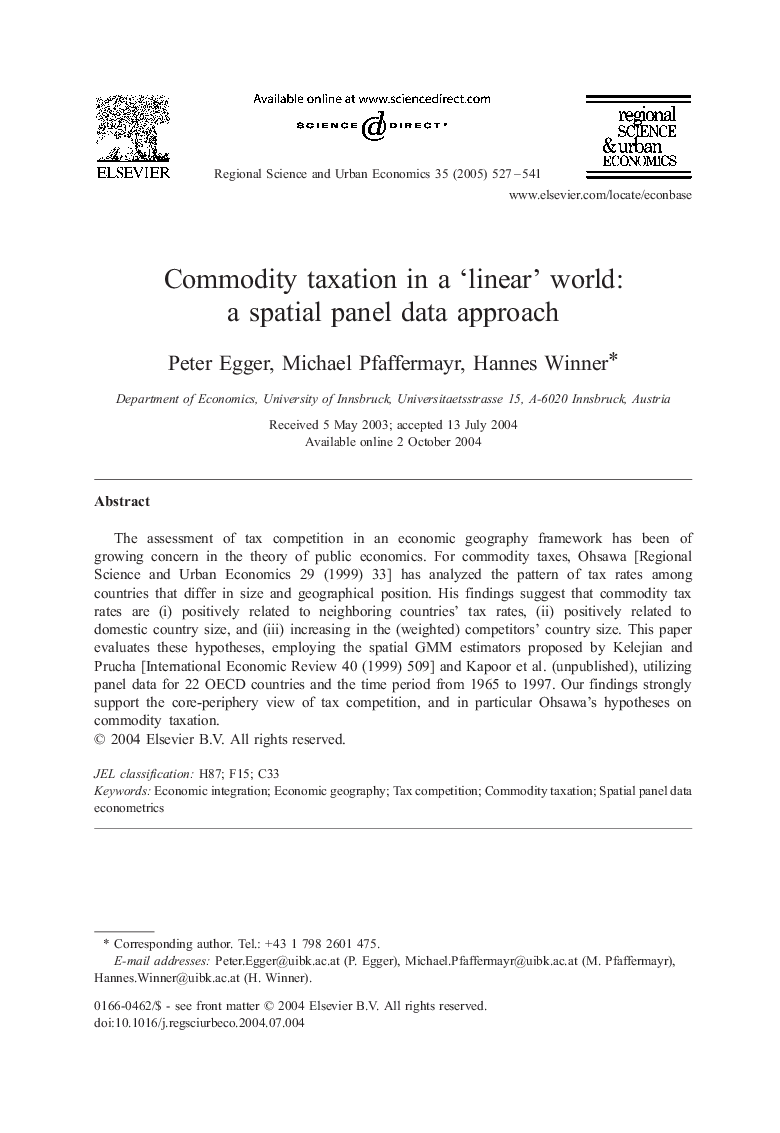| Article ID | Journal | Published Year | Pages | File Type |
|---|---|---|---|---|
| 10482372 | Regional Science and Urban Economics | 2005 | 15 Pages |
Abstract
The assessment of tax competition in an economic geography framework has been of growing concern in the theory of public economics. For commodity taxes, Ohsawa [Regional Science and Urban Economics 29 (1999) 33] has analyzed the pattern of tax rates among countries that differ in size and geographical position. His findings suggest that commodity tax rates are (i) positively related to neighboring countries' tax rates, (ii) positively related to domestic country size, and (iii) increasing in the (weighted) competitors' country size. This paper evaluates these hypotheses, employing the spatial GMM estimators proposed by Kelejian and Prucha [International Economic Review 40 (1999) 509] and Kapoor et al. (unpublished), utilizing panel data for 22 OECD countries and the time period from 1965 to 1997. Our findings strongly support the core-periphery view of tax competition, and in particular Ohsawa's hypotheses on commodity taxation.
Related Topics
Social Sciences and Humanities
Economics, Econometrics and Finance
Economics and Econometrics
Authors
Peter Egger, Michael Pfaffermayr, Hannes Winner,
